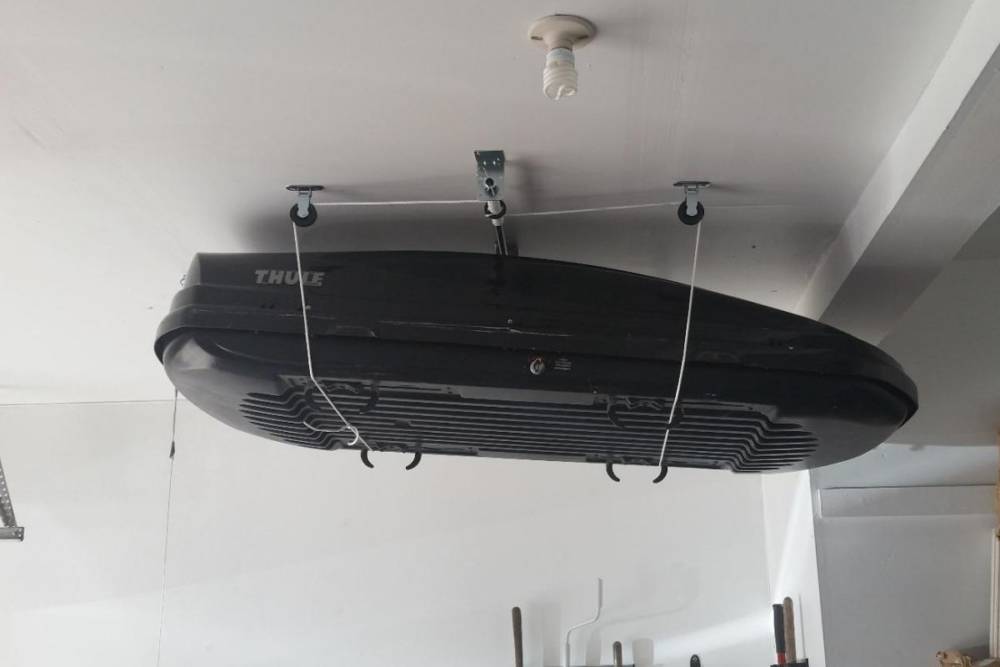Are you an outdoor enthusiast who loves to hit the road with your family and friends? If so, you know the struggle of packing everything you need for your trip. One solution that has become increasingly popular is using a roof box. But what do you do with it when you’re not using it? In this ultimate guide, we’ll cover everything you need to know about storing your roof box when it’s not in use.
Benefits of Using a Roof Box
Before we dive into storage options, let’s quickly cover some of the benefits of using a roof box. Roof boxes provide additional storage space for your car, allowing you to pack more gear and supplies for your trip. They also come in a variety of sizes and styles to fit your specific needs. Additionally, roof boxes are easy to install and remove, and they can improve your vehicle’s aerodynamics, making your trip more fuel-efficient.
Types of Roof Boxes
When considering storage options, it’s important to understand the different types of roof boxes available. Hardshell roof boxes are durable and provide better protection for your belongings, but they are typically heavier and more difficult to remove. Softshell roof boxes are lighter and easier to remove but offer less protection from the elements.
Storage Options
Now that you understand the benefits of using a roof box and the different types available, let’s explore the best storage options for your roof box when it’s not in use.
Option 1: Store it in Your Garage or Shed
If you have a garage or shed, storing your roof box indoors is the best option. This will protect it from the elements and prevent any damage that could occur from prolonged exposure to the sun, wind, and rain. You can use a pulley system or storage hoist to lift the roof box up and out of the way.
Option 2: Use a Roof Box Cover
Another option is to use a roof box cover. This is a protective cover that goes over your roof box and provides protection from the elements. It’s a great option if you don’t have a garage or shed, or if you need to store your roof box outside. Just make sure the cover is designed specifically for your roof box model and size.
Option 3: Leave it on Your Roof Rack
If you have a permanent roof rack on your vehicle, you can leave your roof box mounted to it when it’s not in use. This is a convenient option because it allows you to quickly and easily access your roof box whenever needed. However, leaving your roof box mounted on your roof rack for long periods can strain your vehicle’s suspension unnecessarily and increase wind resistance, leading to decreased fuel efficiency.
Option 4: Use a Storage Unit
If you don’t have a garage or shed, and you don’t want to leave your roof box outside, you can rent a storage unit. This is a good option if you have other items you want to store as well. Just make sure the storage unit is large enough to accommodate your roof box, and that it’s climate-controlled to protect it from extreme temperatures.
Removing and Reinstalling Your Roof Box
No matter which storage option you choose, you’ll need to remove and reinstall your roof box at some point. Here are some tips for doing it safely and efficiently:
- Read the manufacturer’s instructions carefully before removing or reinstalling your roof box.
- If necessary, ensure you have the proper tools, including a step ladder.
- Always use caution when lifting and carrying your roof box.
- Ensure your roof rack is clean and debris-free before reinstalling your roof box.
- Check the weight limit of your roof rack and roof box to ensure you.
Maintenance and Repair
Proper maintenance of your roof box is essential to keep it in good condition and extend its lifespan. Here are some tips for maintaining your roof box:
- Clean your roof box regularly with a mild soap and water solution.
- Make sure your roof box is completely dry before storing it.
- Check your roof box for any signs of wear and tear, such as cracks or damage to the mounting system.
- Repair any damage promptly to prevent further damage.
Conclusion
A roof box is a great addition to any outdoor enthusiast’s gear collection. With the right storage options, you can keep your roof box in good condition and ensure it’s ready for your next adventure. Whether you store it in your garage, use a cover, leave it on your roof rack, or rent a storage unit, follow the manufacturer’s instructions and take care when removing and reinstalling your roof box.
FAQs
What is the weight limit for a roof box?
The weight limit for a roof box varies depending on the brand and model. It’s important to check the weight limit before loading your roof box to prevent damage to your vehicle and belongings.
How do I measure my vehicle for a roof box?
To measure your vehicle for a roof box, you’ll need to measure your roof’s length, width, and height. Ensure to also consider any obstructions, such as antennas or roof rails.
What accessories are available for roof boxes?
Many accessories are available for roof boxes, including locks, cargo nets, and straps. These accessories can help secure your belongings and make packing easier.
Can I use a roof box on a car without a roof rack?
No, a roof box must be mounted to a roof rack. Make sure your vehicle has a compatible roof rack before purchasing a roof box.
What is the best way to load and unload a roof box?
When loading and unloading your roof box, it’s important to use caution and follow the manufacturer’s instructions. Distribute the weight evenly and secure your belongings to prevent shifting during transport. Use a step ladder or stool to make the process easier and safer.






